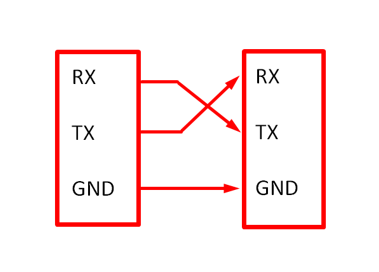Creativity
28th January
Basics
Introduction
In the world of electronics and microcontrollers, communication between devices is crucial. One popular method for serial communication is UART, which stands for Universal Asynchronous Receiver/Transmitter. This blog will walk you through the basics of UART, its working principle, and its applications.
What is UART?
UART is a hardware communication protocol used for asynchronous serial communication between devices. It allows data exchange between devices such as computers, microcontrollers, and various peripherals like sensors and display modules. Asynchronous communication means there is no shared clock signal between the transmitting and receiving devices.
How Does UART Work?
UART communication involves two main components: the transmitter (TX) and the receiver (RX).

Image 1: UART Communication
1. Data Transmission:
The transmitter sends data in the form of a series of bits.
Data is framed with a start bit, data bits, an optional parity bit, and one or more stop bits.
2. Data Reception:
The receiver detects the start bit to synchronize with the incoming data stream.
It then reads the data bits, checks the parity bit (if used) for errors, and finally, the stop bit indicates the end of the data frame.
Basic UART Frame Structure
A typical UART data frame consists of:
Start Bit: Indicates the beginning of the data transmission. It is usually a '0' (low voltage level).
Data Bits: The actual data being transmitted, typically 5 to 8 bits in length.
Parity Bit: An optional bit for error detection. It can be even or odd parity.
Stop Bit(s): Indicates the end of the data frame. It is usually '1' (high voltage level). There can be one or more stop bits.

Image 2: Basic UART Frame Structure
Advantages of UART
Simplicity: UART is simple to implement, making it ideal for basic serial communication.
Low-Cost: UART does not require additional clock lines, reducing the need for extra wiring and components.
Asynchronous: The lack of a shared clock signal allows for flexibility in communication between devices with different clock speeds.
Limitations of UART
Limited Speed: UART is generally slower compared to synchronous communication protocols like SPI or I2C.
Short Distance Communication: UART is best suited for short-distance communication due to potential noise interference over longer distances.
Limited Multi-Device Communication: UART typically supports point-to-point communication. For multiple devices, additional circuitry like multiplexers is needed.
Common Applications of UART
Microcontroller Communication: UART is widely used for debugging and programming microcontrollers.
Embedded Systems: It facilitates communication between embedded systems and peripherals such as sensors, displays, and GPS modules.
Computer Interfaces: UART is often used in serial ports (e.g., RS-232) for connecting computers to external devices like modems and mice.
Conclusion
UART remains a fundamental communication protocol in electronics due to its simplicity and effectiveness for many applications. Understanding its basic operation and structure can help you implement efficient serial communication in your projects. Whether you're working on a small microcontroller-based project or a more complex embedded system, UART provides a reliable method for data exchange.


